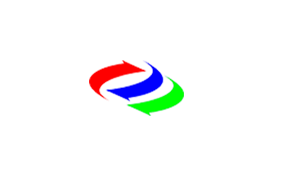1: How to classify LCM?
Liquid crystal display module (LCM) can be classified according to the processing technology or the type of display content. According to the processing technology, it is divided into cob, COG, tab, COF, OLED and TFT modules; According to the type of display content, it can be divided into graphic type, character type, segment code type and TFT color screen.
The segment code LCD module has a simple structure and is mainly used to display numbers, Western characters, some special symbols, fixed graphics, etc. Specific uses are: various digital instruments, timers, counters, etc.
The character lattice LCD module itself has character generator, which has large display content, rich functions and moderate price. It is mainly used to display western language, numbers and letters. Specific uses are: multi-functional instruments and functional display.
The feature of graphic dot matrix liquid crystal display module is that the pixels are arranged continuously. It can edit and display continuous and complete graphics and Chinese characters. It has a large amount of information and strong adaptability. It is widely used in mobile phones, PDAs and various information phones.
2: How to use and keep LCD safely and correctly?
1、 When the user receives the product acceptance, if there is obvious damage or other quality problems in the outer package of the product, please keep it in the original state and contact our company in time;
2、 During the transportation, storage and use of LCD, the product must be controlled in the allowable temperature range, with the humidity of 40% - 60%, and the storage environment free of dust;
3、 When LCD is used, DC voltage is not allowed to be applied, and the maximum DC component cannot exceed 50 mV. When welding LCM, only I / O interface should be welded,
The temperature of the soldering iron should not be higher than 260 ℃, and the soldering time should not exceed 3-4 seconds. The PCB should be cleaned after soldering;
4、 When LCM is assembled, the operator, soldering iron and other appliances shall be well grounded. Attention shall be paid to protect the LCD surface during welding to prevent the flux from splashing on the surface.
5、 The device should not be exposed to direct sunlight and ultraviolet radiation for a long time, so as not to affect its service life;
6、 Do not touch the LCD with organic solvent; In the process of installation and use, avoid hard objects and do not touch grease;
3: Knowledge of backlight module?
Because the LCD panel itself does not have luminous characteristics, a light source must be added to the LCD panel to achieve the display effect. The backlight module is an optical component that provides a back light source in the LCD display products. It is mainly composed of light source, light guide plate, optical diaphragm, plastic frame, etc. The backlight has the characteristics of high brightness, long service life and uniform illumination. At present, there are mainly three types of backlight: CCFL, El and led, which can be divided into side light type and bottom light type according to different light source distribution. According to the color can be divided into red, green, white, blue, etc., with the LCD module continues to be brighter, lighter, thinner direction.
1.CCFL
CCFL (cold cathode fluorescent lamp) features: high brightness, 3000-4000 CD / m2, long life (about 20000 hours), low calorific value, bright white light.
2.EL
EL (electroluminescent device) characteristics: small thickness, 0.4-1.0 mm, wide range of driving conditions, frequency 60-1000 Hz, maximum 150 V AC voltage, light color blue-green, yellow green and white, life about 5000 hours.
3.LED
LED (light emitting diode) characteristics: uniform brightness, long service life (about 100000 hours), low voltage (tributary) drive, no inverter, rich color, yellow green, amber, red, white, etc.
4. Basic structure and display principle of LCD?
The liquid crystal display device belongs to flat panel display device in structure. Its basic structure is flat. Basic structure of typical liquid crystal display device: it is mainly composed of front and rear polarizer, front and rear ITO conductive glass, sealing edge and liquid crystal. Of course, some components of different types of liquid crystal display devices may be different, such as: phase change type, PDLC type, multistable type liquid crystal display devices have no polarizer, active matrix type liquid crystal display devices have active matrix circuit on the substrate, etc., but all liquid crystal display devices can be considered as two substrates with transparent conductive electrodes, holding a liquid crystal layer, It is sealed into a flat box, and sometimes a polarizer may be attached on the outer surface. The three basic components and features of LCD are introduced as follows
1) . glass substrate
This is a very smooth surface of the float production of thin glass. There is a transparent conductive layer of In2O3 and SiO2 on the surface, that is, ITO film. After photolithography, transparent conductive patterns are made, which are composed of pixel pattern and outer lead pattern. Therefore, the external leads can not be soldered by traditional soldering, and can only be connected by conductive rubber strip or conductive tape. If scratched, cut or corroded, the device will be scrapped.
2) . liquid crystal
Liquid crystal material is the main body of liquid crystal display device. The liquid crystal materials used in different devices are different. The liquid crystal materials are mostly composed of several or even more than ten kinds of single liquid crystal materials. Each liquid crystal material has its own fixed clear point TL and crystallization point ts. Therefore, every kind of LCD must be used and stored in a certain temperature range between ts and TL. if the temperature is too low, crystallization will destroy the orientation layer of the LCD; If the temperature is too high, the liquid crystal will lose its liquid crystal state and the function of the liquid crystal display device.
3) . polarizer
Polarizer, also known as polarizer, is made of plastic film material. Coated with a layer of optical pressure sensitive adhesive, it can be pasted on the surface of the liquid crystal cell. There is also a protective film on the surface of the front polarizer, which should be removed when using. The polarizer is afraid of high temperature and humidity, which will depolarize or blister under high temperature and humidity conditions.
The display principle of liquid crystal display device (LCD) is: there are alignment films on two glass substrates, so the liquid crystal will be aligned along the groove. The arrangement state of liquid crystal rod molecules with dipole moment will change under the action of external electric field, so that the light through the liquid crystal display device will be adjusted, so as to show the display effect of light and dark or transmission and non transmission. Each display pixel in the LCD can be controlled by the electric field independently. Different display pixels can form different characters, numbers and graphics on the display screen according to the command of the control signal. Therefore, the function of LCD driver and LCD controller is to establish the required electric field and control the combination of display pixels.


 客服1
客服1 